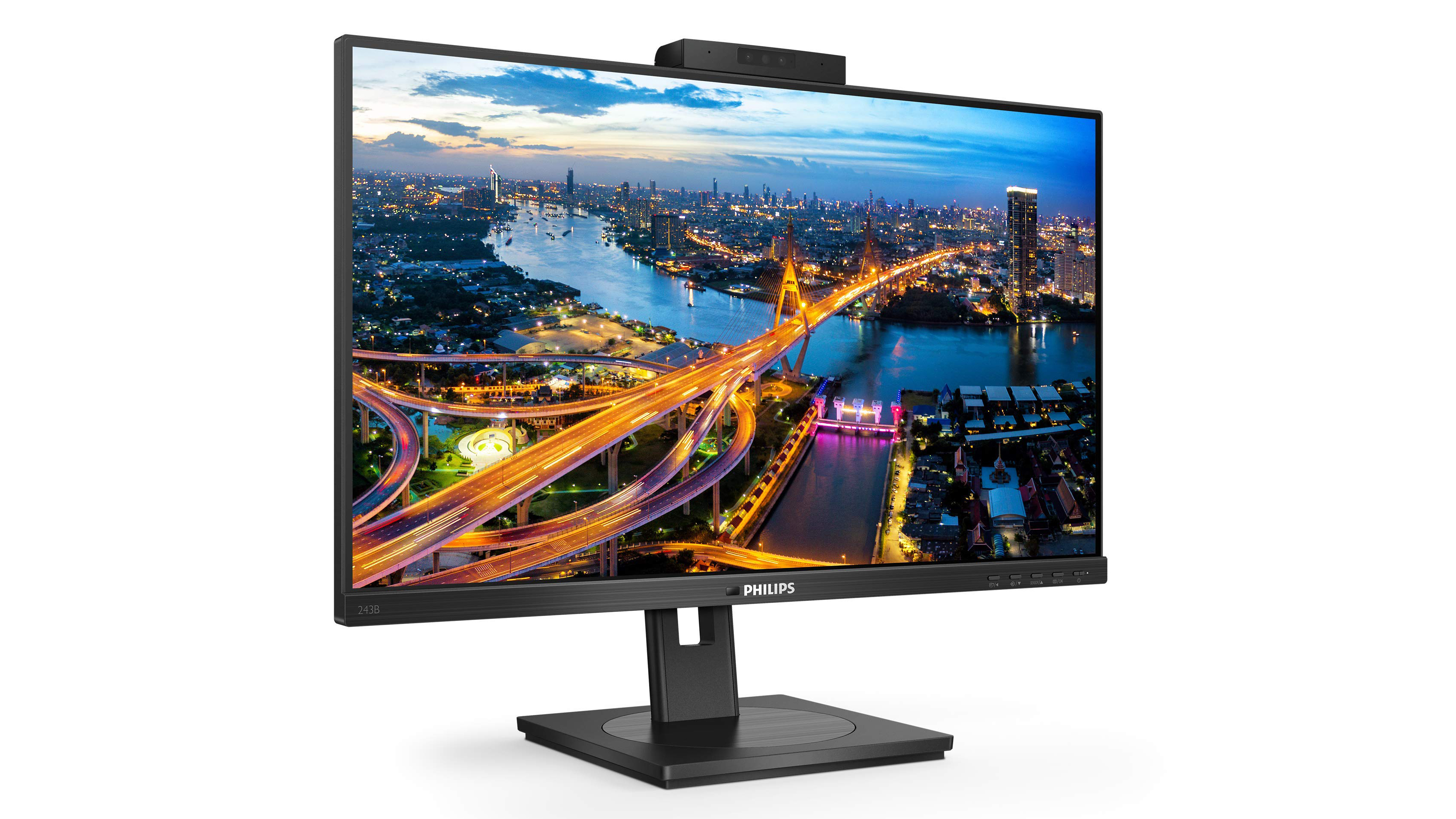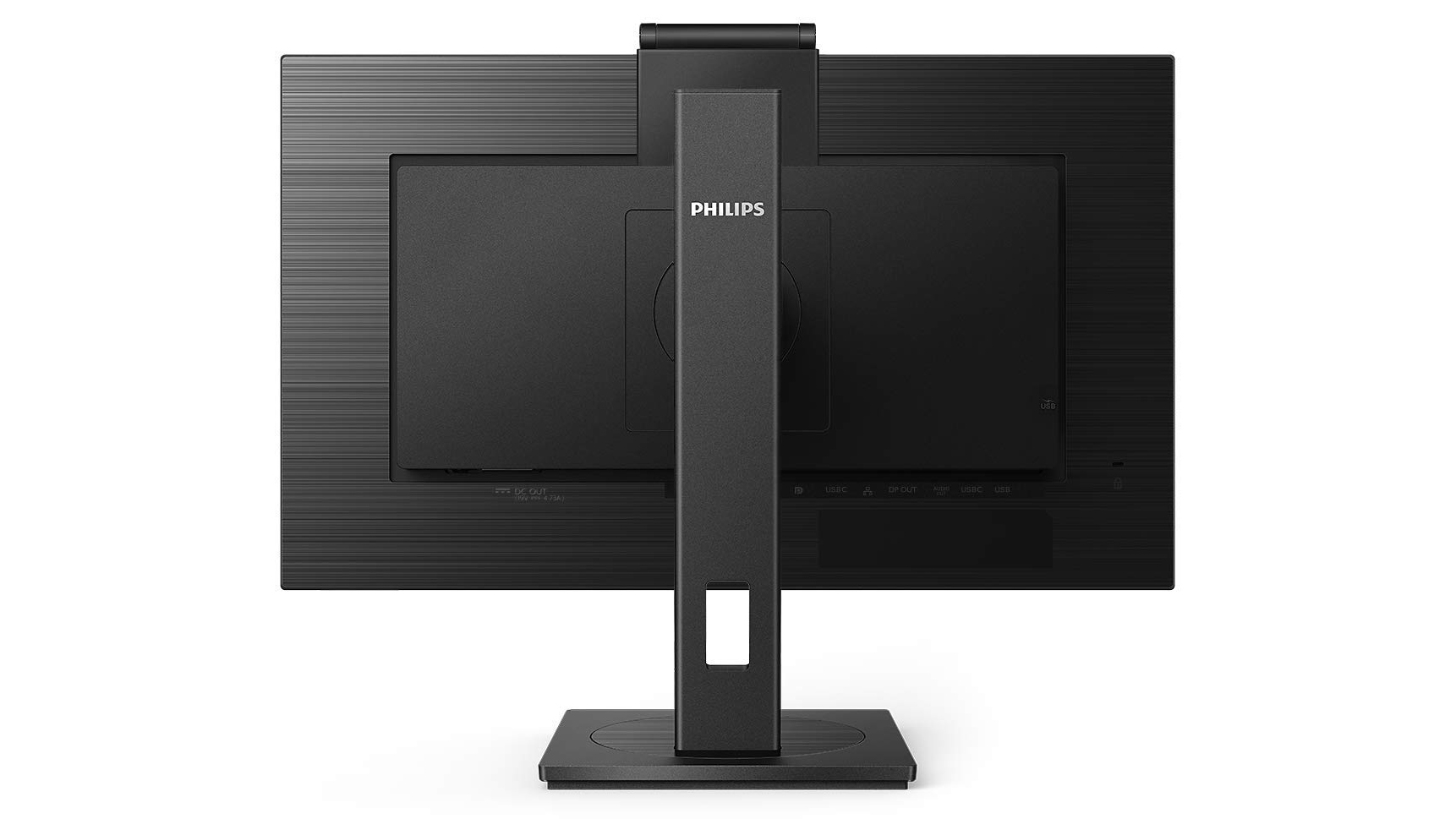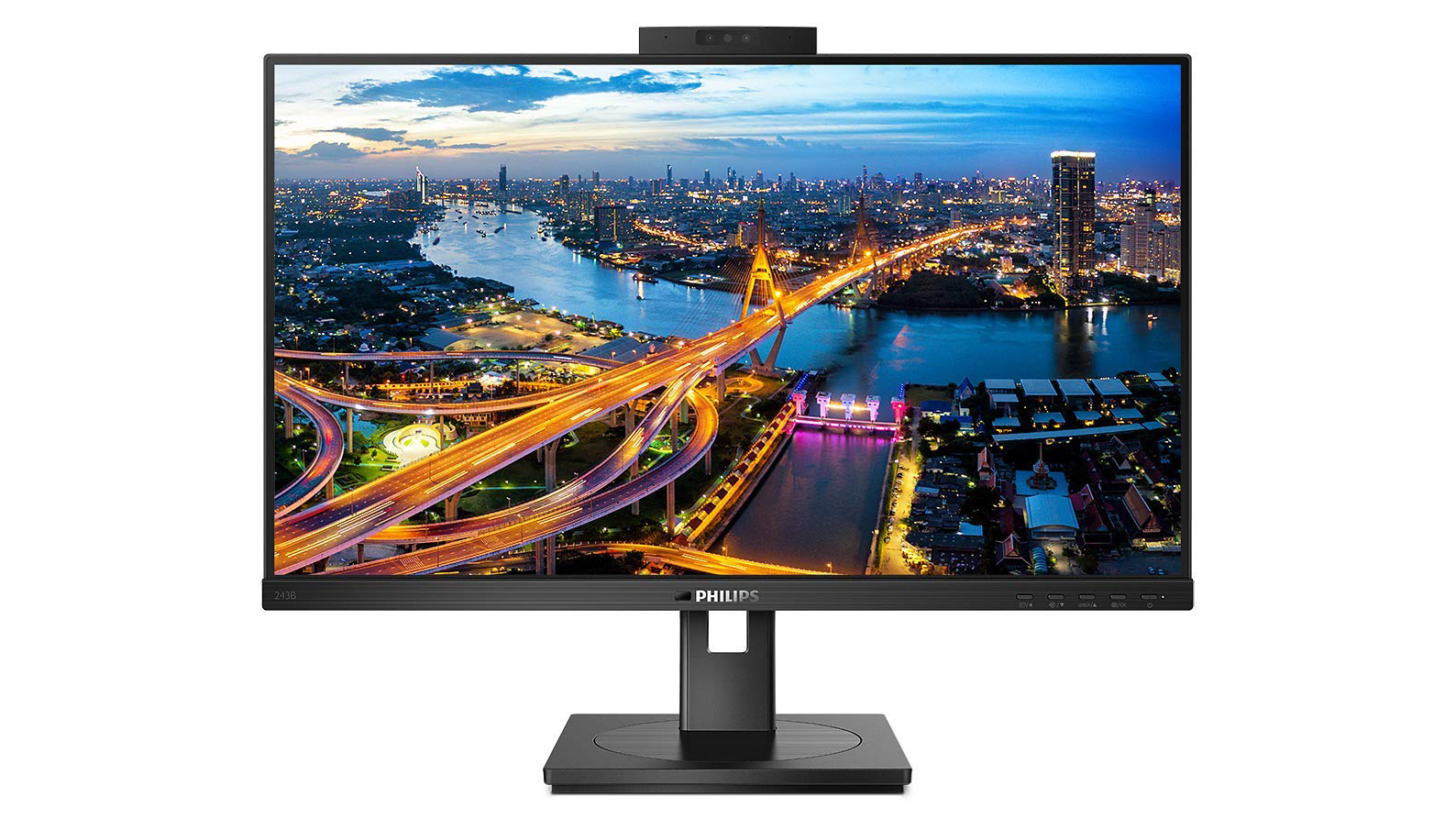Philips 243B1JH review: a great home-office monitor
The Philips 243B1JH offers great connectivity and a webcam in a compact format


The Philips 243B1JH offers a strong mixture of convenience and image quality, those after large, high-res screens or gaming features should look elsewhere.
-
+
75Hz IPS panel
-
+
Good mix of connections
-
+
Clever webcam package
- +
-
-
1080p isn't very high-res
-
-
Refresh rate still low for gaming
-
-
More expensive than many screens of its size
Why you can trust T3
The Philips 243B1JH is the kind of screen stared into by millions around the world,
and this 24-inch 1080p monitor with a nice 75Hz refresh rate and useful array of ports won’t look out of place on any desk.
Its IPS panel means you get good image quality. It’s just the sort of thing, in fact, that you could look at all day in your home office.
There are a few features that mark the 243B1JH out from the crowds of similar models on the market. There’s a four-port USB 3.2 hub, USB-C connectivity with 100W of power delivery to make one of the best monitors for MacBook Pro, a clever spring-loaded webcam package that pops up and over the top of the screen like something on Iron Man’s suit, and it's made with 85% recycled materials.
Philips 243B1JH review: Price
At around £220, this is more expensive than many other 24-inch IPS screens – twice as expensive as some budget models. It has the advantages of that 75Hz refresh rate, if that really matters to you, and all the useful USB technology – the hub and the Type-C connections – plus the camera pack that slots so nicely back into the monitor’s frame when you’re not using it.
If it’s just the screen you’re after, there are models from Benq, Dell and ViewSonic that will display images just as well as this Philips, albeit at 60Hz. What you’re paying for are all the office-friendly features, such as the one-cable USB Type-C connection, and the energy efficiency.

Philips 243B1JH review: Design and setup
The design of monitors rarely deviates much from the average, but within those boundaries this is a nice-looking screen, with thin bezels around three sides and the bottom one not being too thick either. Thanks to all the USB port, power outlets and camera packs it’s perhaps a little thicker than the thinnest screens around, but we can live with that as long as it brings some sort of long-term benefits.
And it does. While not packing quite the same KVM cleverness as the Benq PD2705Q, the USB 3.2 hub on the Philips 243B1JH is a genuinely useful thing. It’s more than a data distribution device, as one of the USB ports supports fast charging for your phone or tablet.
Get all the latest news, reviews, deals and buying guides on gorgeous tech, home and active products from the T3 experts
USB-C connectivity means you can connect a laptop over a single cable, and 100W of power delivery for that laptop means it can be any laptop, including something high-power such as the MacBook Pro 16-inch. Many similar screens top out at 65W, which is fine for 13-inch laptops, but will struggle with the big boys.
The camera pack is particularly interesting, because there’s more in there than a 1080p webcam. As well as maintaining your privacy by being useless when not in its proper forward-pointing position, it has all the goodies required for Windows Hello. There's more - in the screen's bottom bezel lurks a proximity sensor that cuts the juice when it detects you’ve wandered off, boosting the screen’s green credentials and the power switch actually switches the monitor off rather than putting it into standby.
The stand is a flexible model that comes in two parts and joins with a thumbscrew before clunking into the standard spring-loaded joint at the back of the screen. It swivels, tilts, and tips all the way over into portrait orientation if you want it to.
Setup is almost completely automated, with the menus only coming into use if you want to switch inputs and it’s not auto-switching, activating the auto-calibration setting when you first switch it on, or if you want to put it into one of the user modes, which include a low-latency game mode, economy mode for further power savings (though a duller picture) and a low blue-light mode. The buttons, arranged on the front of the frame, click nicely under the finger and are easy to see, unlike those screens that tuck them away.

Philips 243B1JH review: Features and picture
You get a good number of connections around the back of the screen. There are the usuals, such as the power feed from the external brick, and DisplayPort 1.4, HDMI 1.4, and USB Type-C video feeds. Then there’s a second DisplayPort that acts as an output for daisy-chaining two screens together, and the USB hub, which houses a second USB Type-C, and three Type-A sockets, one on the side for easy access.
There’s an audio out (the 2W built-in speakers are so weedy they might as well not be there) and an Ethernet port capable of gigabit speeds. Being able to connect all this to your laptop through a single USB Type-C cable is extremely useful, particularly if you’re in the habit of using your laptop as an actual portable computer. There’s also an extra power out socket, presumably for powering a second screen from the same power brick.
Image quality, as you’d expect from a modern IPS panel, is excellent, with a viewing angle of 178°. You get 105% of the sRGB gamut, and a contrast ratio of 1000:1. Apart from the 75Hz refresh rate, which is slightly higher than the usual 60Hz you find in 24in 1080p screens, there’s nothing here that shouts as being particularly different to the norm.
There’s an anti-glare coating that works well, so you’ll be able to place it near a window without constantly having to reposition it to keep reflections off the screen, a low blue light mode to ease eye-strain, and a light sensor to adjust the brightness depending on the ambient light.

Philips 243B1JH: Verdict
The question here is about the features and price balance. Image quality is good, no question, but not wildly better than other screens at the same price for a little cheaper. You're paying a little more for the webcam and all the connectivity options, ranging from USB-C and USB-A to Ethernet. If what you want is a hub as well as a screen, then then this would make an excellent addition to a home office, perhaps paired with the cheaper 242B1 model, that doesn’t have the USB hub or webcam, through that daisy-chain DisplayPort output.
Do you value image quality alone, or is having a compact all-in-one solution to home office needs worth the extra price? If it's the latter, we absolutely recommend this.
Also consider
Fancy yourself even more resolution? Acer's CB282K is a 4K panel that's extra sharp. However, it will cost you yet more cash, but it's still very affordable by best 4K monitors standards. Well worthy of your consideration.
If you're wondering how we test our monitors here at T3 – or indeed any gadgets, and believe us, we do cover an awful lot – then head over to our How We Test page for the full lowdown on our process and ethics.